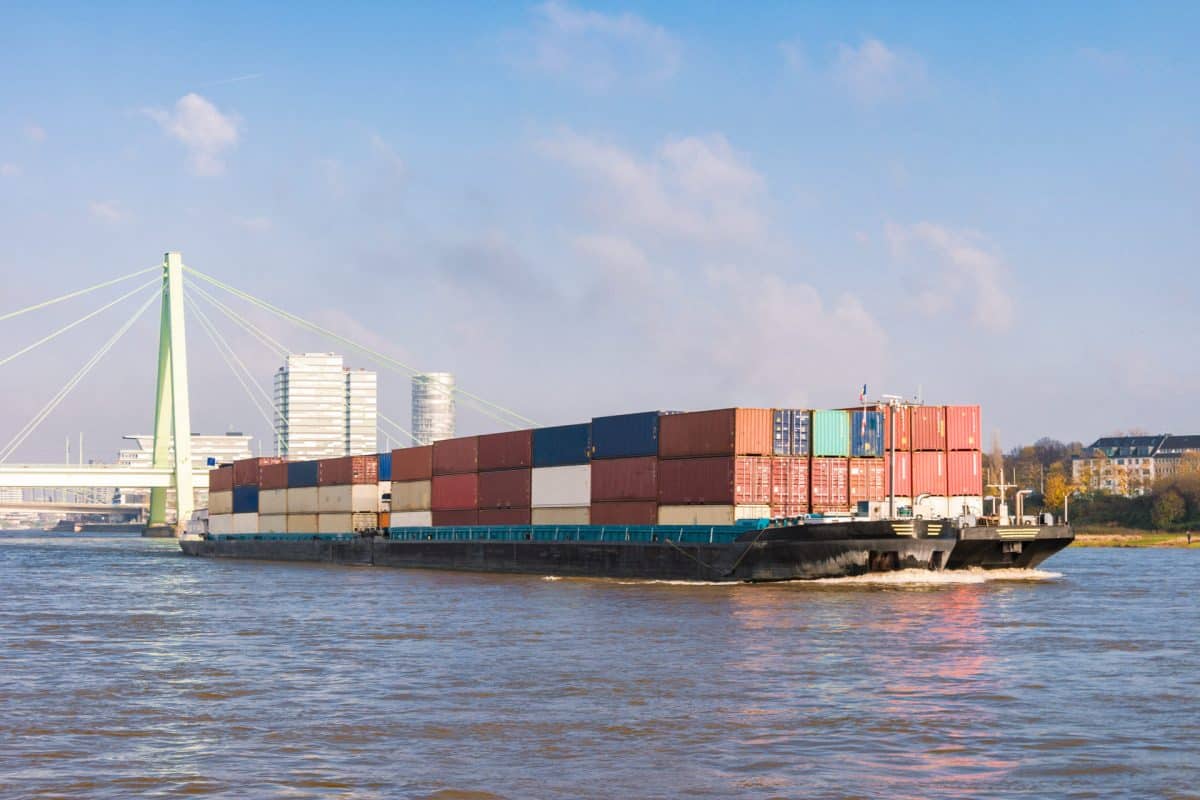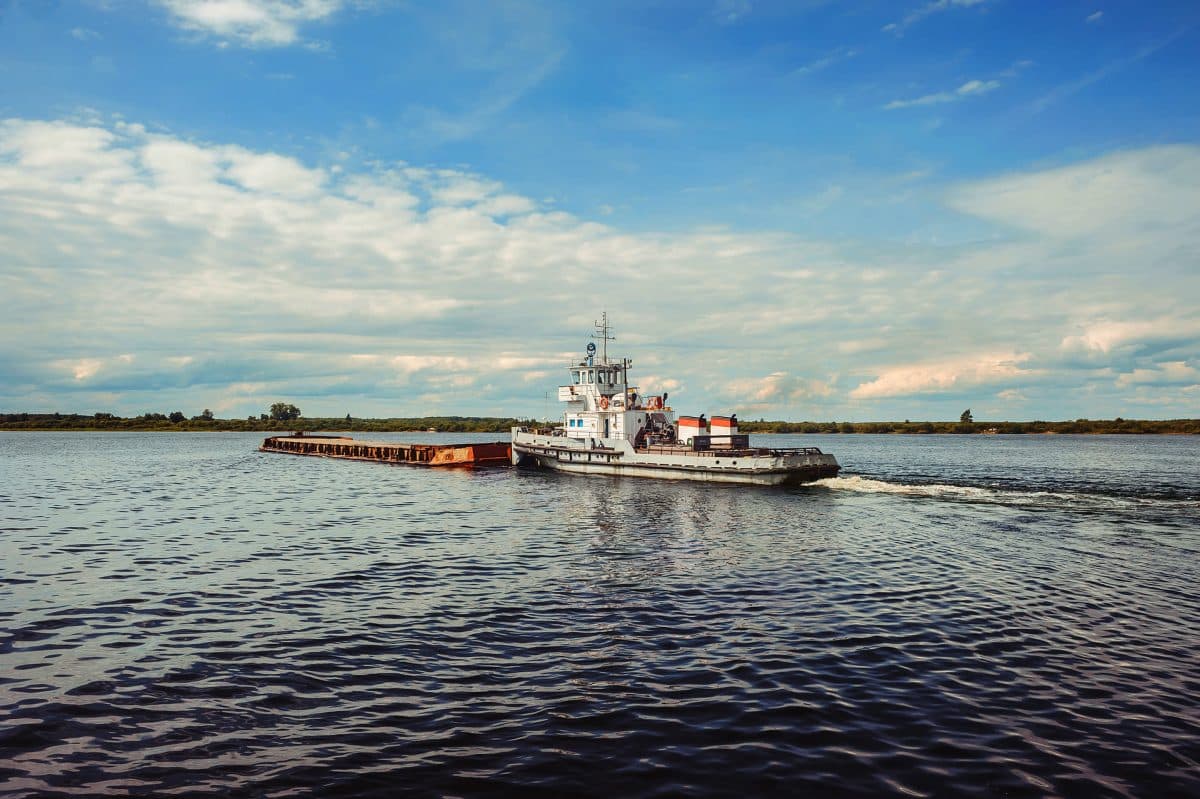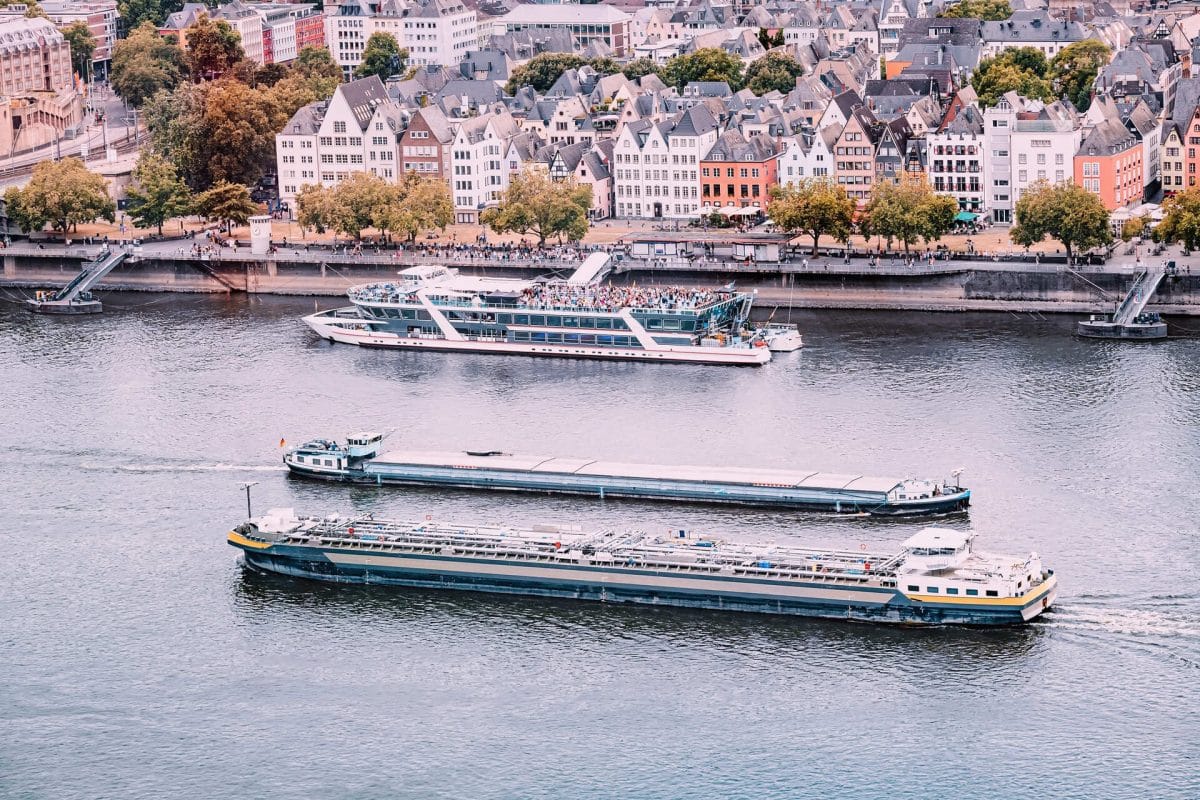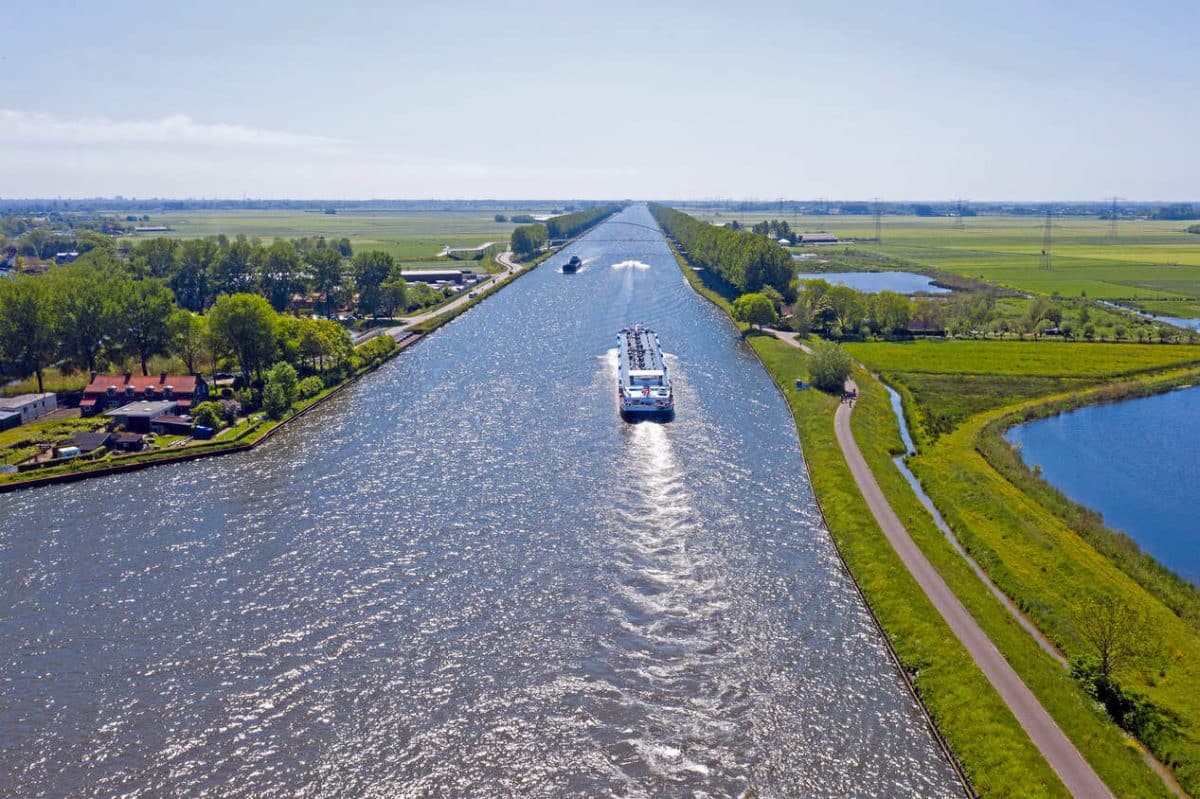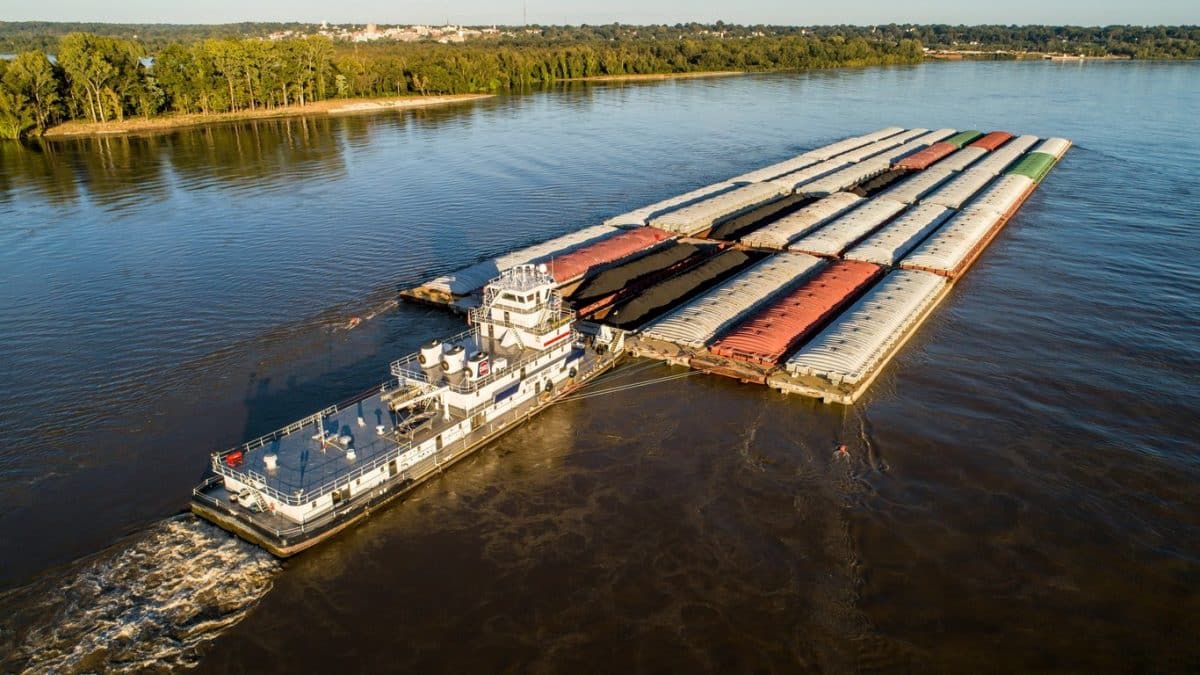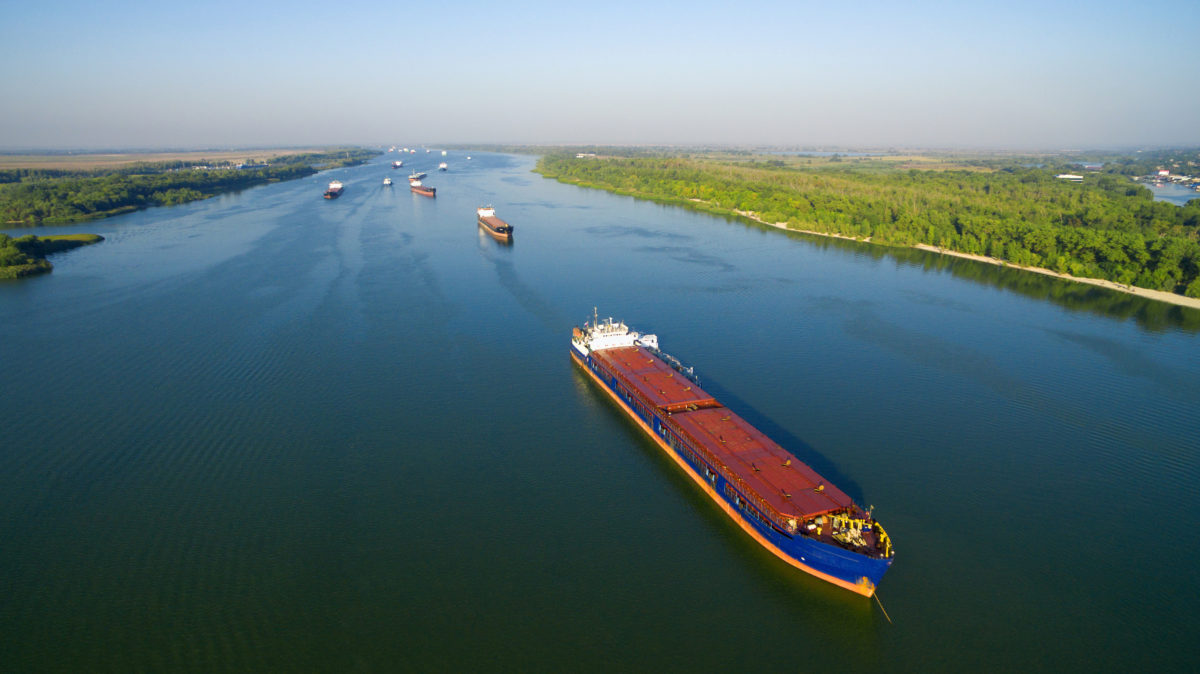The Rhine barge market in the week of 17–21 November was marked by stable-to-softer rates, calm trading conditions, and ongoing uncertainty driven by volatile gasoil pricing. Water levels fluctuated but remained high enough to support moderate intakes across most routes, preventing any hydrology-driven rate support. Market sentiment was shaped by low urgency from charterers, fully booked fleets on the operator side, and a backwardated futures structure that continued to discourage stockbuilding.
1. Freight Rates: Mostly Stable, With Isolated Minor Adjustments
Freight rates showed minimal movement during the week:
- At the start of the week, rates remained broadly stable, though Strasbourg experienced a small €0.75 decline and Basel slipped by €0.05, while other destinations held firm.
- Following a few higher-priced deals, Cologne saw a modest €0.50 increase, whereas other routes stayed unchanged.
- As inquiry levels softened mid-week, Basel edged slightly lower (–€0.40), but most routes remained steady.
- Later in the week, rate levels were completely unchanged, with spot activity slowing significantly.
- By the end of the week, rates stayed stable once again, as the market turned quiet, and hardly any spot business was registered.
Takeaway: The Rhine freight market saw virtually no rate movement, reflecting limited trading appetite and a well-balanced supply–demand environment.
2. Water Levels: Fluctuating but Supportive for High Intakes
Hydrology was not a constraining factor this week:
- 17 November: Kaub at 148 cm, forecast to rise toward 200 cm; Maxau at 465 cm, fully navigable.
- 18 November: Kaub at 141 cm but rising to 172 cm, enabling 1,700–1,800-ton intakes for 110m barges; Maxau stable in the 440–470 cm band.
- 19 November: Maxau decreased slightly (to 459 cm), while Kaub increased to 141 cm, both favorable for full loading conditions.
- 20 November: Kaub increased marginally (hovering 150–160 cm forecast), Maxau steady at 450–440 cm range.
- 21 November: Kaub at 156 cm, Maxau at 445 cm, both forecast to increase the following week, allowing nearly full intakes mid-week.
Takeaway: High, stable water levels ensured full navigability and kept logistical cost pressures low.
3. Market Activity: From Moderate Early Week to Nearly Silent by Friday
The spot market weakened progressively through the week:
- A slight uptick in activity with six deals, despite delays and colder weather raising interest in heated barges.
- Nine deals recorded, one of the week’s busier days, though sentiment remained cautious due to gasoil price volatility and lighter COA nominations for the upcoming week.
- Eight deals with operators reporting steady but unspectacular business; cancellations on scheduled trips created some unexpected vessel availability by the middle of the week.
- Activity dropped sharply to just one deal, with charterers declaring they had already covered their needs for the week and gasoil backwardation discouraging any stock building.
- The week closed with only one deal, reflecting a virtually inactive market as both sides awaited clearer signals into late November.
Takeaway: The second half of the week saw near-standstill activity, driven by low charterer appetite and high gasoil price uncertainty.
4. Market Drivers: Backwardation, Volatility, and Slowing Demand
The week’s behavior was guided by three main forces:
- Steep Gasoil Backwardation: The spread between the current gasoil contract and the next month reached roughly $40/ton, sharply discouraging stockbuilding and delaying charterer decisions.
- High Price Volatility: Gasoil prices moved rapidly throughout the week, making traders and importers hesitant to fix new business.
- Demand Softness and Fully Booked Fleets: Most barge operators reported their spot fleets already assigned for the coming weekend, while charterers indicated satisfaction with their existing allocations, creating little room for additional spot activity.
Takeaway: The combination of backwardation and low demand left little incentive for additional Rhine movements.
5. Outlook: Flat Market Expected, With Potential Softness Ahead
Looking into late November:
- The backwardated product structure is expected to continue limiting inland movements.
- Water levels are forecast to rise modestly, preserving full intakes and preventing rate pressure.
- Unless a demand-side catalyst emerges, such as colder weather pushing heating oil flows, freight rates are likely to remain flat with a slight downward bias.
Conclusion
Overall, the Rhine barge freight market during 17–21 November remained remarkably stable, with freight rates essentially unchanged across all destinations and trading activity dwindling as the week progressed. Ample water depth allowed for full barge intakes, eliminating any logistical support that might otherwise have lifted prices. At the same time, steep backwardation in gasoil futures, fluctuating product prices, and lackluster demand kept charterers on the sidelines, while barge operators reported their fleets largely committed but not overly busy. With both supply and demand balanced yet unmotivated, the market settled into a quiet equilibrium, ending the week calm, flat, and waiting for a stronger directional signal heading into late November.
What’s next?
Are you ready to face your challenges head-on?
We now offer a FREE customized trial to our BargeINSIGHTS tool, an all-in-one platform for liquid bulk barge transport optimization.
With BargeINSIGHTS, you get instant insights into barge freight rates, bunker gas oil prices, water levels, vessel tracking, and barge availability—all in one place. No more time-consuming data collection; everything you need is at your fingertips.
Click here to schedule your demo and get access to BargeINSIGHTS for free!

